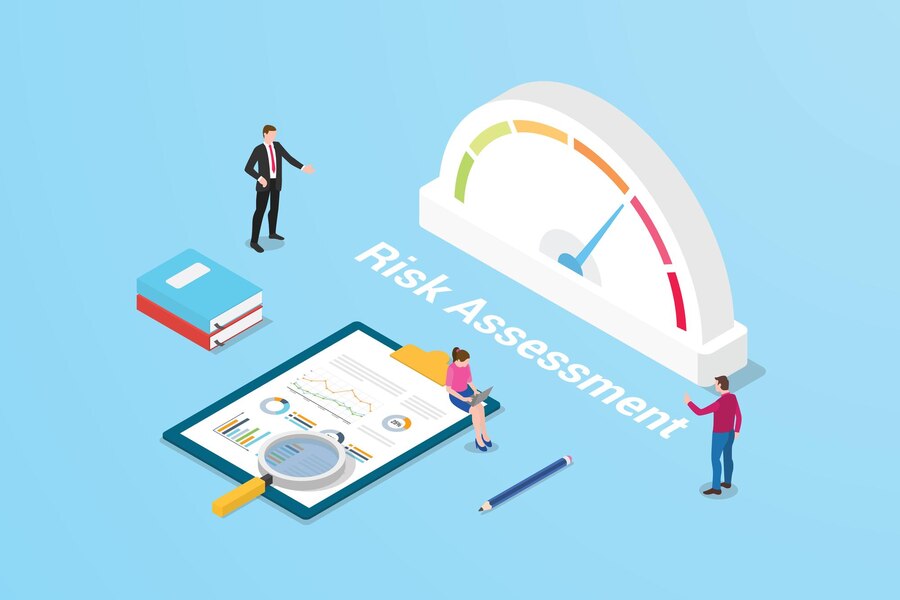Perhaps the most significant decision you have to make, financially speaking is loan application with the most massive preparation and lenders investigate a wide range of aspects that compose your financial standing as a basis for determining whether they will lend to you or not. Proper preparation is going to boost the chances of approval and also grant better terms. In this comprehensive article, I will break down an all-inclusive checklist on how to prepare yourself for loan application.
1. Assess Your Financial Condition

1.1 Credit Report and Score Analysis
Get Your Credit Reports: Obtain all three major credit reports, Equifax, Experian, and TransUnion. FCRA grants a consumer the right to get a free report from each of those companies once a year. Get yours at AnnualCreditReport.com.
- Check Your Credit Score: The credit score determines the loan terms. Almost always, the better the credit score is, the better the rate given will be. Try to ensure that your credit score lies above 700 to have a fair chance at favorable terms.
- Correct Mistakes: Find your credit report with all its details. Search for an error or outdated information that would be a part of it. Lodge a dispute with the credit bureaus against any error in the report to improve your credit scores.
- Improve Your Credit Score (If Needed): Get them improved if your score isn’t what you wanted. Clear the outstanding debts. Do not attract new applications of credits. Continue to make timely payments to existing debts.
- Give Me Your DTI
- Multiply the monthly payments on debt – minimum and maximum. Multiply by gross income for the month. It’s this ratio that lenders consider to assess your ability to service additional debt.
- Optimal Ratio: Most lenders look for a debt-to-income ratio at less than 36%. If yours is over that, there’s time to pay down some debt or boost your income before being approved


2.1 Determine What You Will Be Borrowing for
- Know What You Want the Loan For: Determine why you will need the loan—that may be to purchase a house, finance your business, or other big expenses. That alone will help you determine which kind of loan to choose and how much you will be required to borrow.
Types of Loans: Loans are different. Any loan can vary its requirements. For instance, a mortgage will require a down payment, but a personal loan need not.
2.2 Determine the Amount Needed
Total Expense: That is, apart from the sum amount, interest, and all other expenses incurred with it, also must be factored in. House loans, for instance, could include property tax and insurance.
Never borrow too much. Make available for yourself what you need sincerely. That way, you will avoid unnecessary debts and frustration from additional financial burdens.
#### 3. Better Credit History
3.1 Save for Down Payments
- Determine Down Payment Need :The majority of the loans, including mortgage, entail a down payment. Save at least 20% of the price to get better deals and thus avoid a type of insurance known as PMI.
- Plan How to Save Money : Prepare to save money to have sufficient amount for your down payment. This may require opening a dedicated saving account to hold the amount needed.
3.2 Pay Off Other Debts
High Interest Debt Consolidation: Consolidate the high-interest debts that include credit card payments to help raise the credit score, besides lowering the DTI ratio.
Debt Consolidation/Refinancing: Sometimes you would have to consolidate or refinance, hence getting a better interest rate and easier repayments.
-Safety Funds. Carry 3-6 months of living expenses in case of the worst moment and to show lenders that you are stable.
Keep your emergency funds in another savings account rather than other saving types. Leave them in reserves
4. Understand Your Loan Conditions and Costs
4.1 Compare your interest rates

- Shop Around: Compare interest rates among different lenders to find the lowest one available for your loan. Rates usually are dependent on the loan type, amount, and your financial profile.
- Fixed vs. Variable Rates: Make a choice between a fixed-rate loan that has a fixed payment or a variable-rate loan whereby payments are periodic and dependent on market conditions.
4.2 Review Fees and Additional Costs - Know Fees: Origination fees, closing costs, and application fees are some of them. These can add up quickly and really affect the total cost of the loan.
- Know Additional Costs: Prepayment penalty and others can be included.
**4.3 Know Repayment Terms
Length of Loan: Know how long the loan term has to be: 15 or 30 years. How will that influence your monthly payments and what amount you pay in interest.
Paying Plan: Decide on a paying schedule, which may mean in that case only whether it accommodates the budget.#### 5. Collect All Needed Paperwork
5.1 Accumulate Account Statements: You Need Paper
Accumulate a pay stub, tax return bank statement, and proof of assets. Ensure the paper is correct and current.
You must be prepared with your document so you can prepare yourself too to present it so that you don’t have to face the frustration and pains when applying.
5.2 Employment and Income Verification
- Proof of Income: Proof of income can be verification letter from employment, or more recent pay stubs -If you receive other income please list this, such as rental income or investments.6. Professional Counselling
6.1 Consult a Financial Advisor
- Professional Counselling: You shall consult a financial advisor who shall counsel you professionally on budgeting, debt management, and making preparations for a loan.
- Maximize Your Finances: Maybe the financial advisor will ensure that you make proper decisions that aim at maximizing your finances.
6.2 Interview a Loan Officer or Broker
Loanda Options: You find many loan options, and you can move out there to discuss with a loan officer or broker options available for what you may need so that you may qualify them .
Take You by the Hand: They will take you through all the process, step by step and let you know that which option will best suit your conditions.
7. Apply for Your Loan
**7.1 Complete Your Loan Application Properly
Complete your loan application on the affirmative. You would wish that all information given will tally with all mentioned in your documents so that there will be no hassle.
- Check your Application Before Application: Carefully check your application for error or omission.
7.2 Enquire about your Application - Check Application Status: Follow through with the lender to check on your application status.
- Information Where Needed: Respond promptly if the lender asks you for more information. Ago
Action Step to Financial Readiness
- Credit Report and Score
Get a copy, review, correct errors
Improve score - DTI Ratio
Obtain today’s DTI ratio
Reduce debt or raise income - Budget
Prepare budget
- Reformulate budget to accommodate loan payments
- **Apply and Become Pre-Approved for a loan
Why?
How much one will borrow
loan
title - **Down Payment
Saving for Down payment
On Mortgages to at least 20%
title - **High Interest Debts
Pay debt with a higher interest rate
Perhaps this is the opportunity to refinance.
To pay off all those debts that have a higher interest, especially loans and their interest is above 7 percent.
title - **Emergency Fund
Save or keep an emergency fund for 3-6 months’ expenses. - **Loan Conditions and Expenses Revalue interest rates
Maintain and be appropriately updated on all fees and costs that apply
Understand the term that surround the repayment.
Early
- **Paperwork
Collect relevant documents showing your financial activities, pay slips, tax returns for income taxation, bank statements
Be employed and earning. - **Professional Guidance
Seek a financial counselor .
Visit a loan officer or broker .
. - **Loan Application”
Complete the right application form for that kind of loan
Adhere to up the decision by the lender.
Equipped with this checklist, it is a very adequate loan application process you’re undergoing; your financial status will improve, and there will also be a chance of getting a good loan. In simple words, good preparation is just the best way of managing a loan responsibly to achieve desired goals successfully. Perhaps the most significant decision you have to make, financially speaking is loan application with the most massive preparation and lenders investigate a wide range of aspects that compose your financial standing as a basis for determining whether they will lend to you or not. Proper preparation is going to boost the chances of approval and also grant better terms. In this comprehensive article, I will break down an all-inclusive checklist on how to prepare yourself for loan application.
1. Assess Your Financial Condition
1.1 Credit Report and Score Analysis
Get Your Credit Reports: Obtain all three major credit reports, Equifax, Experian, and TransUnion. FCRA grants a consumer the right to get a free report from each of those companies once a year. Get yours at AnnualCreditReport.com.
- Check Your Credit Score: The credit score determines the loan terms. Almost always, the better the credit score is, the better the rate given will be. Try to ensure that your credit score lies above 700 to have a fair chance at favorable terms.
- Correct Mistakes: Find your credit report with all its details. Search for an error or outdated information that would be a part of it. Lodge a dispute with the credit bureaus against any error in the report to improve your credit scores.
- Improve Your Credit Score (If Needed): Get them improved if your score isn’t what you wanted. Clear the outstanding debts. Do not attract new applications of credits. Continue to make timely payments to existing debts.
1.2 DTI
Give Me Your DTI
Multiply the monthly payments on debt – minimum and maximum. Multiply by gross income for the month. It’s this ratio that lenders consider to assess your ability to service additional debt.
Optimal Ratio: Most lenders look for a debt-to-income ratio at less than 36%. If yours is over that, there’s time to pay down some debt or boost your income before being approved.
- **Debt Paydown: Pay down those high-interest debts and avoid new debt to improve your DTI ratio.
1.3 Budget - Income and Expenses : Get all your sources of income and monthly expenses. It will enable you to grasp the current financial position and the amount that would be possible to take as a loan.”.
- Budget Change: Add loan paybacks which you will probably be making and spend this way. Your budget should be able to stretch to accommodate this new loan burden without your purse getting so tight on you.
- Know How Much You Will Owe
2.1 Determine What You Will Be Borrowing for
- Know What You Want the Loan For: Determine why you will need the loan—that may be to purchase a house, finance your business, or other big expenses. That alone will help you determine which kind of loan to choose and how much you will be required to borrow.
Types of Loans: Loans are different. Any loan can vary its requirements. For instance, a mortgage will require a down payment, but a personal loan need not.
2.2 Determine the Amount Needed
Total Expense: That is, apart from the sum amount, interest, and all other expenses incurred with it, also must be factored in. House loans, for instance, could include property tax and insurance.
Never borrow too much. Make available for yourself what you need sincerely. That way, you will avoid unnecessary debts and frustration from additional financial burdens.
#### 3. Better Credit History
3.1 Save for Down Payments
- Determine Down Payment Need: The majority of the loans, including mortgage, entail a down payment. Save at least 20% of the price to get better deals and thus avoid a type of insurance known as PMI.
- Plan How to Save Money: Prepare to save money to have sufficient amount for your down payment. This may require opening a dedicated saving account to hold the amount needed.
3.2 Pay Off Other Debts
High Interest Debt Consolidation: Consolidate the high-interest debts that include credit card payments to help raise the credit score, besides lowering the DTI ratio.
Debt Consolidation/Refinancing: Sometimes you would have to consolidate or refinance, hence getting a better interest rate and easier repayments.
-Safety Funds. Carry 3-6 months of living expenses in case of the worst moment and to show lenders that you are stable.
Keep your emergency funds in another savings account rather than other saving types. Leave them in reserves
4. Understand Your Loan Conditions and Costs
4.1 Compare your interest rates
- Shop Around: Compare interest rates among different lenders to find the lowest one available for your loan. Rates usually are dependent on the loan type, amount, and your financial profile.
- Fixed vs. Variable Rates: Make a choice between a fixed-rate loan that has a fixed payment or a variable-rate loan whereby payments are periodic and dependent on market conditions.
4.2 Review Fees and Additional Costs - Know Fees: Origination fees, closing costs, and application fees are some of them. These can add up quickly and really affect the total cost of the loan.
- Know Additional Costs: Prepayment penalty and others can be included.
**4.3 Know Repayment Terms
Length of Loan: Know how long the loan term has to be: 15 or 30 years. How will that influence your monthly payments and what amount you pay in interest.
Paying Plan: Decide on a paying schedule, which may mean in that case only whether it accommodates the budget.#### 5. Collect All Needed Paperwork
5.1 Accumulate Account Statements: You Need Paper
Accumulate a pay stub, tax return bank statement, and proof of assets. Ensure the paper is correct and current.
You must be prepared with your document so you can prepare yourself too to present it so that you don’t have to face the frustration and pains when applying.
5.2 Employment and Income Verification
- Proof of Income: Proof of income can be verification letter from employment, or more recent pay stubs -If you receive other income please list this, such as rental income or investments.6. Professional Counselling
6.1 Consult a Financial Advisor
- Professional Counselling: You shall consult a financial advisor who shall counsel you professionally on budgeting, debt management, and making preparations for a loan.
- Maximize Your Finances: Maybe the financial advisor will ensure that you make proper decisions that aim at maximizing your finances.
6.2 Interview a Loan Officer or Broker
Loanda Options: You find many loan options, and you can move out there to discuss with a loan officer or broker options available for what you may need so that you may qualify them .
Take You by the Hand: They will take you through all the process, step by step and let you know that which option will best suit your conditions.
7. Apply for Your Loan
**7.1 Complete Your Loan Application Properly
Complete your loan application on the affirmative. You would wish that all information given will tally with all mentioned in your documents so that there will be no hassle.
- Check your Application Before Application: Carefully check your application for error or omission.
7.2 Enquire about your Application - Check Application Status: Follow through with the lender to check on your application status.
- Information Where Needed: Respond promptly if the lender asks you for more information. Ago
Action Step to Financial Readiness
- Credit Report and Score
Get a copy, review, correct errors
Improve score - DTI Ratio
Obtain today’s DTI ratio
Reduce debt or raise income - Budget
Prepare budget
- Reformulate budget to accommodate loan payments
- **Apply and Become Pre-Approved for a loan
Why?
How much one will borrow
loan
title - **Down Payment
Saving for Down payment
On Mortgages to at least 20%
title - **High Interest Debts
Pay debt with a higher interest rate
Perhaps this is the opportunity to refinance.
To pay off all those debts that have a higher interest, especially loans and their interest is above 7 percent.
title - **Emergency Fund
Save or keep an emergency fund for 3-6 months’ expenses. - **Loan Conditions and Expenses Revalue interest rates
Maintain and be appropriately updated on all fees and costs that apply
Understand the term that surround the repayment.
Early
- **Paperwork
Collect relevant documents showing your financial activities, pay slips, tax returns for income taxation, bank statements
Be employed and earning. - **Professional Guidance
Seek a financial counselor .
Visit a loan officer or broker .
. - **Loan Application”
Complete the right application form for that kind of loan
Adhere to up the decision by the lender.
Equipped with this checklist, it is a very adequate loan application process you’re undergoing; your financial status will improve, and there will also be a chance of getting a good loan. In simple words, good preparation is just the best way of managing a loan responsibly to achieve desired goals successfully.
